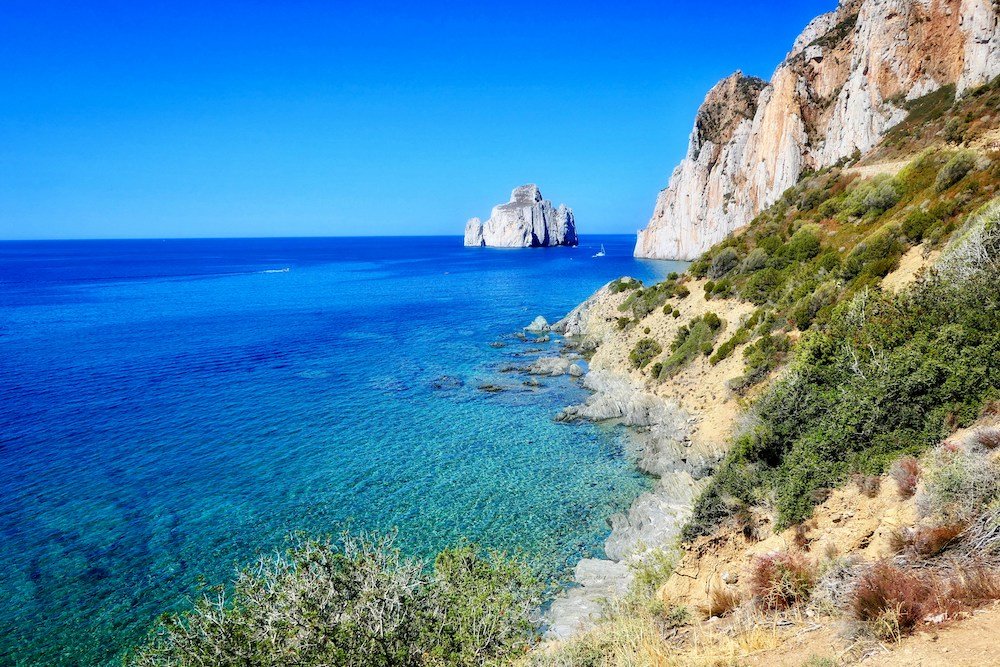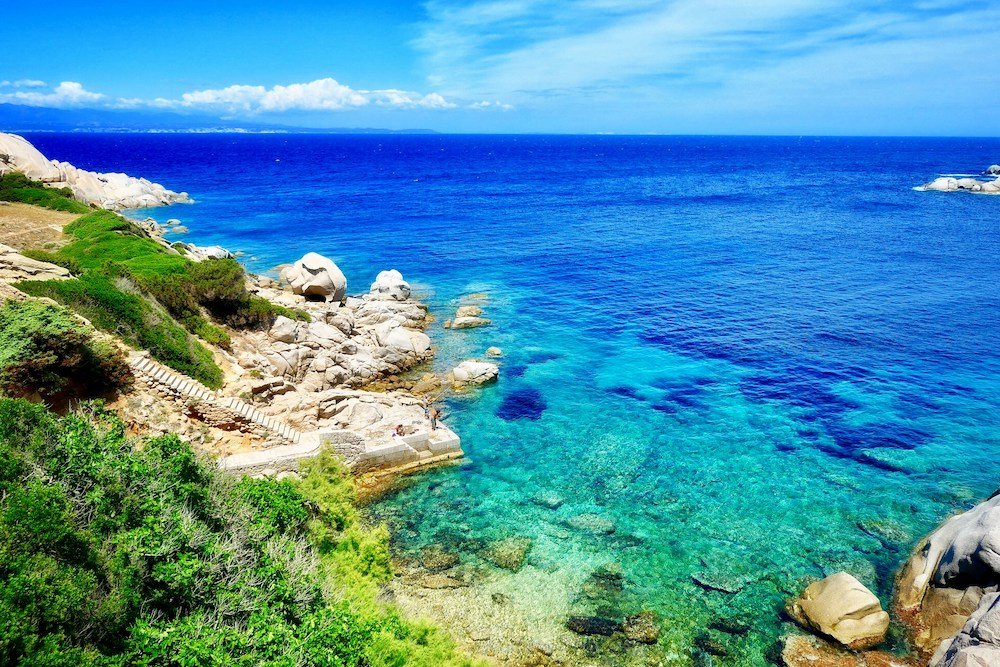
The island of Sardinia, an enchanting jewel in the Mediterranean, beckons travelers with its rugged landscapes, azure waters, and rich cultural heritage.
Situated west of the Italian peninsula, the island of Sardinia boasts a unique blend of history, tradition, and natural beauty.
Its significance as a top travel destination is underscored by its diverse offerings, from pristine beaches to ancient archaeological sites.
Before embarking on a journey to Sardinia, it is essential to grasp key aspects that define the island’s charm and allure.
Understanding Sardinia’s geography, climate, culture, and local customs enriches the travel experience, fostering deeper connections with its people and landscapes.
By delving into the intricacies of Sardinia’s offerings, travelers can better prepare for their adventure and make the most of their time exploring this captivating island paradise.
As we delve deeper into the wonders of Sardinia, we uncover a tapestry of experiences that await curious travelers.
From the rugged mountains of the interior to the idyllic beaches that fringe its coastline, Sardinia promises a journey like no other.
Join us as we unveil the 12 things you should know before visiting the island of Sardinia, ensuring an unforgettable expedition into this Mediterranean gem.
1. Geography and Climate

Sardinia’s geographical landscape is a mesmerizing tapestry of rugged mountains, rolling hills, and pristine coastline.
The island, located in the heart of the Mediterranean Sea, spans approximately 24,090 square kilometers (9,301 square miles), making it the second-largest island in the region.
Sardinia is characterized by its diverse terrain, which includes the majestic peaks of the Gennargentu mountain range in the central region, verdant forests, and fertile plains.
The coastline stretches for over 1,850 kilometers (1,150 miles), offering a plethora of stunning beaches, hidden coves, and dramatic cliffs.
Overview of Sardinia’s Climate Throughout the Year
Sardinia enjoys a Mediterranean climate, characterized by hot, dry summers and mild, wet winters.
The island experiences abundant sunshine throughout the year, making it an ideal destination for outdoor enthusiasts and sun-seekers alike.
During the summer months, from June to September, temperatures soar, with averages ranging from 25°C to 30°C (77°F to 86°F).
The coastal areas benefit from refreshing sea breezes, while inland regions may experience higher temperatures.
In contrast, winters in Sardinia, from December to February, are mild and relatively wet. Temperatures typically range from 8°C to 15°C (46°F to 59°F), with occasional rainfall and storms.
However, even in winter, Sardinia retains much of its natural beauty and charm, offering visitors the opportunity to explore its cultural treasures and scenic landscapes.
Best Times to Visit Based on Weather Considerations
The best time to visit Sardinia largely depends on personal preferences and desired activities.
For travelers seeking to bask in the warm Mediterranean sun and indulge in water sports and beach activities, the summer months, particularly from June to August, are ideal.
Alternatively, for those who prefer milder temperatures and quieter surroundings, the shoulder seasons of spring (April to May) and autumn (September to October) offer pleasant weather conditions and fewer crowds.
During these months, temperatures are comfortable, ranging from 18°C to 25°C (64°F to 77°F), making it conducive to exploring Sardinia’s natural wonders, hiking trails, and cultural sites without the intense heat of summer.
Ultimately, the best time to visit Sardinia varies based on individual preferences, with each season offering its own unique charm and allure.
Whether you’re drawn to the vibrant energy of summer or the tranquility of the shoulder seasons, Sardinia invites you to discover its breathtaking landscapes and rich cultural heritage throughout the year.
2. Culture and Language

Sardinia’s cultural tapestry is as rich and diverse as its breathtaking landscapes.
Rooted in centuries of history and influenced by various civilizations, Sardinian culture reflects a unique blend of customs, traditions, and folklore that continue to thrive to this day.
The island’s vibrant festivals, such as the renowned “Cavalcata Sarda” and “Sant’Efisio Procession,” showcase the enduring traditions of Sardinia, where locals don traditional attire, perform folk dances, and celebrate with music and feasting.
These cultural events provide visitors with a glimpse into Sardinia’s storied past and its deep connection to its heritage.
Overview of the Sardinian Language and Its Significance
The Sardinian language, known as “Sardu” or “Limba Sarda,” holds a special place in the hearts of Sardinians and serves as a symbol of the island’s identity and heritage.
With roots tracing back to ancient times, Sardinian is recognized as one of Italy’s minority languages, with distinct dialects spoken across different regions of the island.
While Italian is the official language of Sardinia and widely spoken throughout the island, Sardinian remains an integral part of daily life for many locals, particularly in rural communities.
Its preservation and promotion are testament to the Sardinian people’s commitment to safeguarding their cultural heritage and linguistic diversity.
Tips for Interacting with Locals and Understanding Cultural Nuances
When visiting Sardinia, embracing local customs and respecting cultural nuances can enhance the travel experience and foster meaningful connections with the island’s residents.
Here are some tips for interacting with locals and immersing yourself in Sardinian culture:
- Greet with Courtesy: Begin conversations with a friendly “Buongiorno” (good morning) or “Buonasera” (good evening) to show respect and courtesy to locals.
- Embrace Hospitality: Sardinians are known for their warm hospitality and welcoming nature. Accept invitations graciously and engage in conversations to learn more about their traditions and way of life.
- Respect Traditions: During cultural events and festivals, observe local customs and traditions with reverence. Pay attention to dress codes and participate in festivities with enthusiasm and respect.
- Learn Basic Phrases: While Italian is widely spoken, learning a few phrases in Sardinian can demonstrate your interest in the local culture and language. Simple greetings such as “Adiosu” (goodbye) and “Grazie” (thank you) are appreciated by locals.
- Dine Like a Local: When dining out, savor the flavors of Sardinian cuisine and embrace dining etiquette, such as waiting for the host to initiate the meal and expressing gratitude for hospitality.
By embracing Sardinian culture and engaging with locals in a respectful manner, travelers can forge meaningful connections and gain a deeper appreciation for the island’s rich heritage and traditions.
As you explore the wonders of Sardinia, immerse yourself in its vibrant tapestry of culture, language, and community, creating memories that will last a lifetime.
3. Getting There

Getting to Sardinia is relatively convenient, thanks to various transportation options available to travelers.
Whether you prefer air or sea travel, Sardinia offers several routes to reach its shores.
Air Travel:
- Flights: Sardinia is served by three main airports: Cagliari-Elmas Airport (CAG) in the south, Olbia Costa Smeralda Airport (OLB) in the northeast, and Alghero-Fertilia Airport (AHO) in the northwest. These airports offer domestic and international flights, connecting Sardinia to major cities across Europe and beyond.
Sea Travel:
- Ferry Services: Travelers can also reach Sardinia via ferry services from mainland Italy and other Mediterranean destinations. Major ferry ports include Porto Torres, Olbia, and Cagliari, offering regular ferry connections to ports in mainland Italy, Corsica, and France.
Overview of Airports and Ferry Services
Airports:
- Cagliari-Elmas Airport (CAG): Located near the capital city of Cagliari, this airport serves as a gateway to southern Sardinia.
- Olbia Costa Smeralda Airport (OLB): Situated in the northeast, Olbia Airport is a major hub for travelers heading to the Emerald Coast and surrounding areas.
- Alghero-Fertilia Airport (AHO): Serving the northwest region, Alghero Airport provides access to the vibrant city of Alghero and its surroundings.
Ferry Services:
- Porto Torres: Situated in the northwest, Porto Torres is a key ferry port offering connections to Genoa and other Italian ports.
- Olbia: Located in the northeast, Olbia is a major ferry terminal serving routes to mainland Italy, including Civitavecchia and Livorno.
- Cagliari: In the south, Cagliari port offers ferry services to mainland Italy and other Mediterranean destinations.
Recommendations for Planning Transportation in Advance
To ensure a smooth and hassle-free journey to Sardinia, consider the following recommendations for planning transportation in advance:
- Book Flights or Ferry Tickets Early: Especially during peak travel seasons, such as summer, it’s advisable to book flights or ferry tickets well in advance to secure preferred travel dates and avoid last-minute price hikes.
- Research Transportation Options: Compare different transportation options based on cost, convenience, and travel time. Consider factors such as airport or ferry terminal locations, transportation connections, and baggage allowances.
- Check Schedules and Availability: Be mindful of flight and ferry schedules, as they may vary depending on the season and demand. Plan your itinerary accordingly to accommodate travel times and potential delays.
- Consider Rental Cars or Public Transportation: Depending on your itinerary and preferences, consider renting a car to explore Sardinia independently or utilizing public transportation, such as buses and trains, to navigate the island’s cities and towns.
By planning transportation in advance and familiarizing yourself with available options, you can streamline your travel arrangements and focus on enjoying the enchanting landscapes and cultural treasures that await you in Sardinia.
4. Accommodation Options
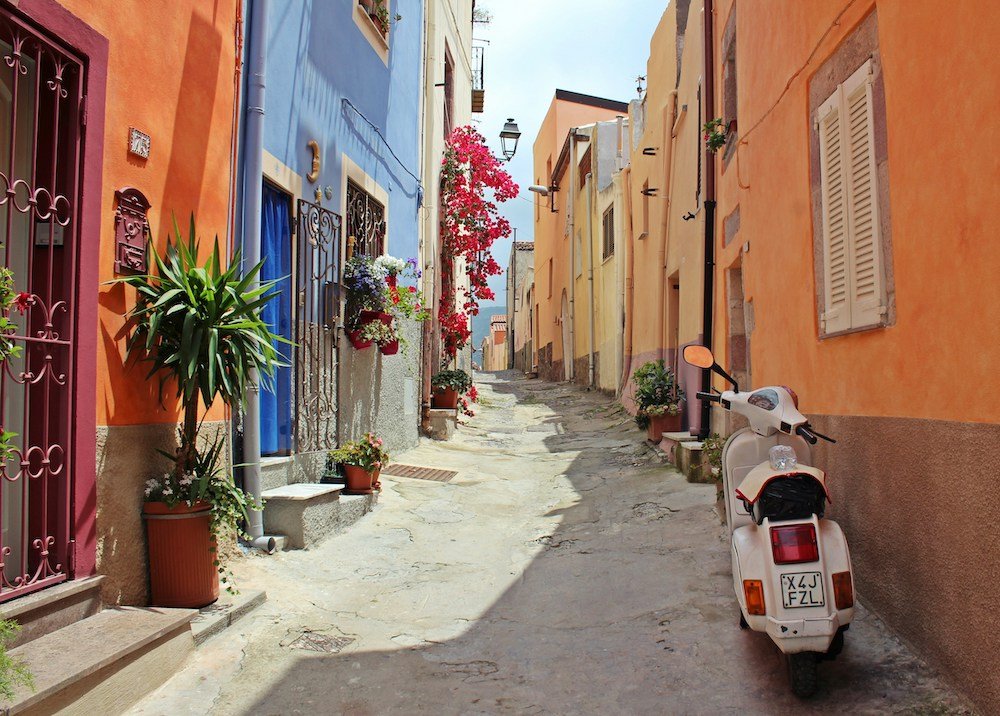
Sardinia offers a diverse array of accommodation options to suit every traveler’s preferences and budget.
From luxurious beach resorts to charming bed and breakfasts, the island caters to a wide range of tastes and requirements.
Hotels and Resorts:
- Sardinia boasts a plethora of hotels and resorts scattered along its coastline, offering luxury amenities, stunning views, and convenient access to beaches and attractions.
- Visitors can choose from boutique hotels, family-friendly resorts, and five-star properties, each promising a unique and memorable stay.
Agriturismi:
- Agriturismi, or farmhouse accommodations, provide travelers with an authentic taste of rural life in Sardinia. These charming properties often feature comfortable rooms, home-cooked meals made with local ingredients, and opportunities to experience agricultural activities firsthand.
Holiday Rentals:
- For those seeking flexibility and privacy, holiday rentals such as villas, apartments, and cottages are popular choices in Sardinia. These self-catering accommodations offer ample space, fully equipped kitchens, and the freedom to explore the island at your own pace.
Suggestions for Different Budget Levels and Preferences
Whether you’re a budget-conscious traveler or seeking a luxurious retreat, Sardinia offers accommodation options to suit every pocket and preference:
Budget-Friendly Options:
- Hostels and guesthouses provide affordable accommodation for backpackers and budget travelers, offering basic amenities and communal spaces for socializing.
- Campsites and camping villages are popular choices for outdoor enthusiasts, providing opportunities to immerse oneself in nature while enjoying budget-friendly accommodation.
Mid-Range Accommodations:
- Mid-range hotels and bed and breakfasts offer comfortable rooms, personalized service, and convenient amenities at competitive rates.
- Agriturismi provide excellent value for money, combining comfortable accommodations with authentic culinary experiences and rural charm.
Luxury Retreats:
- Luxury resorts and boutique hotels pamper guests with lavish amenities, elegant surroundings, and unparalleled service. Many of these properties feature spa facilities, gourmet restaurants, and exclusive beach access.
- Private villas and upscale holiday rentals offer privacy, seclusion, and personalized service, making them ideal choices for discerning travelers seeking a bespoke experience.
Importance of Booking Accommodations in Advance During Peak Seasons
During peak seasons, such as summer and major holidays, Sardinia experiences high demand for accommodations, particularly in popular tourist destinations.
To secure your preferred lodging and avoid disappointment, it is advisable to book accommodations well in advance.
Benefits of Early Booking:
- Ensures availability and choice: Booking early allows you to choose from a wider selection of accommodations and secure rooms that meet your preferences and budget.
- Peace of mind: By confirming your accommodations in advance, you can relax and focus on planning other aspects of your trip, knowing that your lodging is taken care of.
- Cost savings: Many hotels and resorts offer early booking discounts and special promotions, allowing you to enjoy savings on accommodation costs.
- Flexibility: Early booking provides flexibility in terms of travel dates and room options, giving you greater control over your itinerary.
By booking accommodations in advance, you can enjoy a stress-free and memorable stay in Sardinia, ensuring that your vacation unfolds seamlessly amidst the island’s breathtaking landscapes and cultural treasures.
5. Cuisine and Dining Etiquette

Sardinian cuisine is a tantalizing reflection of the island’s rich history, diverse landscapes, and culinary traditions.
Rooted in simplicity and authenticity, Sardinian dishes showcase the bounty of the land and sea, incorporating fresh ingredients and time-honored recipes passed down through generations.
Popular Dishes:
- Culurgiones: These traditional Sardinian dumplings are filled with potatoes, cheese, and mint, often served with a simple tomato sauce or butter and sage.
- Porceddu: A beloved Sardinian specialty, porceddu is a succulent roast suckling pig, seasoned with herbs and slow-cooked until tender and flavorful.
- Fregula: Similar to couscous, fregula is a type of pasta made from semolina flour, typically served with seafood, vegetables, or hearty stews.
- Pane Carasau: Also known as “carta da musica” (music paper), pane carasau is a thin, crispy flatbread that pairs perfectly with local cheeses, cured meats, and olive oil.
- Seadas: A decadent Sardinian dessert, seadas are golden-fried pastries filled with melted cheese and drizzled with honey, creating a delightful balance of sweet and savory flavors.
Dining Etiquette and Cultural Norms to Be Aware Of
When dining in Sardinia, observing traditional etiquette and cultural norms enhances the dining experience and shows respect for local customs:
- Arrive on Time: Punctuality is appreciated in Sardinian culture, so arrive on time for reservations or dinner invitations.
- Dress Appropriately: Dress neatly and modestly when dining out, especially in upscale restaurants or during festive occasions.
- Respect Meal Times: Lunch is the main meal of the day in Sardinia, typically enjoyed leisurely with family and friends. Dinner is usually lighter and served later in the evening.
- Show Appreciation: Express gratitude to the host or restaurant staff for their hospitality and culinary creations. A simple “Grazie” (thank you) goes a long way.
- Savor the Experience: Take your time to savor each dish and appreciate the flavors, textures, and cultural significance behind Sardinian cuisine.
Recommendations for Trying Local Specialties and Dining Experiences
To fully immerse yourself in Sardinia’s culinary delights, consider the following recommendations for trying local specialties and dining experiences:
- Visit Agriturismi: Experience authentic Sardinian hospitality and farm-to-table cuisine at agriturismi, where you can savor traditional dishes made from fresh, locally sourced ingredients.
- Explore Local Markets: Wander through bustling markets such as Mercato di San Benedetto in Cagliari or Mercato Civico in Olbia to discover a vibrant array of local produce, cheeses, cured meats, and artisanal products.
- Join Food Tours and Cooking Classes: Embark on guided food tours or hands-on cooking classes to learn about Sardinian culinary traditions, taste regional specialties, and master traditional recipes under the guidance of local chefs.
- Dine al Fresco: Enjoy alfresco dining at seaside trattorias, rustic agriturismi, or picturesque piazzas, where you can indulge in fresh seafood, aromatic wines, and breathtaking views of the Mediterranean.
6. Attractions and Activities
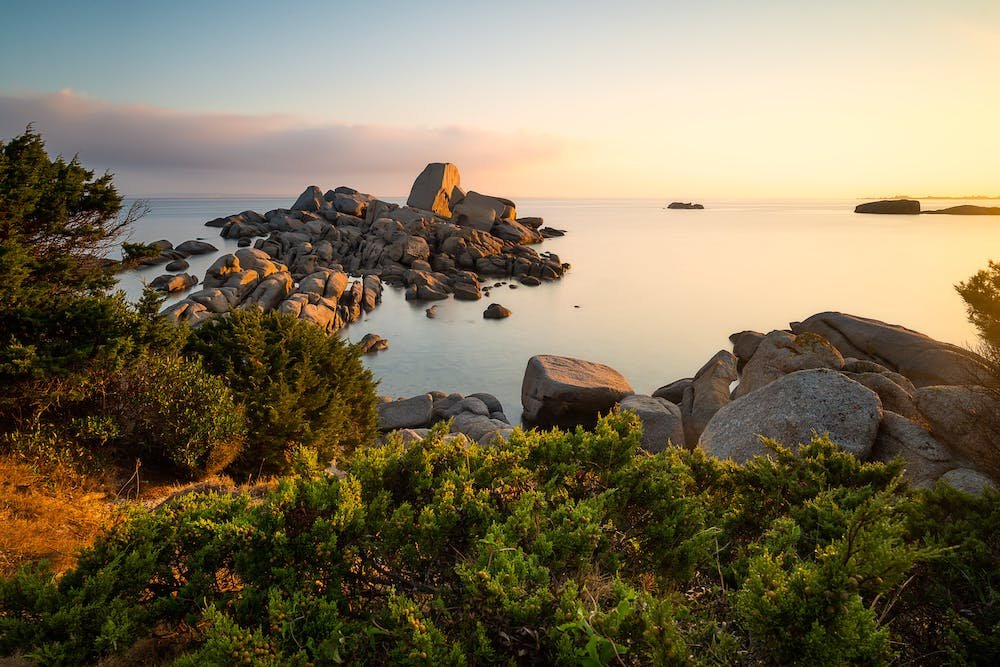
Sardinia is a treasure trove of natural wonders, historical landmarks, and cultural gems, offering travelers a myriad of attractions to explore and discover:
Nuragic Civilization:
- Explore the ancient ruins of Nuragic settlements, including the iconic Nuraghe structures such as Su Nuraxi in Barumini, which date back to the Bronze Age and are UNESCO World Heritage Sites.
Beaches and Coastal Beauty:
- Discover some of the most stunning beaches in the Mediterranean, such as Spiaggia della Pelosa in Stintino, Cala Goloritzé in Baunei, and La Pelosa Beach in Alghero, renowned for their crystal-clear waters and pristine sands.
Gennargentu National Park:
- Venture into the rugged landscapes of Gennargentu National Park, home to scenic hiking trails, majestic mountains, and diverse wildlife, including the endangered Sardinian deer and griffon vultures.
Caves and Grottos:
- Explore mesmerizing caves and grottos, such as Grotta di Nettuno (Neptune’s Grotto) near Alghero and Grotte del Bue Marino (Marine Bull Caves) in Cala Gonone, where you can marvel at stunning rock formations and underground lakes.
Recommendations for Outdoor Activities and Sightseeing
Sardinia offers a wealth of outdoor activities and sightseeing opportunities for adventurers and nature enthusiasts:
- Hiking and Trekking: Embark on scenic hikes along coastal paths, mountain trails, and nature reserves, such as the Selvaggio Blu trail or the challenging ascent of Punta La Marmora, Sardinia’s highest peak.
- Water Sports: Dive into the azure waters of the Mediterranean for snorkeling, scuba diving, kayaking, and sailing adventures, or try your hand at windsurfing and kiteboarding along the island’s picturesque coastline.
- Cycling and Mountain Biking: Explore Sardinia’s diverse landscapes on two wheels, pedaling through vineyards, olive groves, and ancient villages, or tackling exhilarating mountain biking routes in the rugged hinterland.
- Boat Excursions: Set sail on boat excursions to explore hidden coves, secluded beaches, and offshore islands, such as the Maddalena Archipelago and Tavolara Marine Protected Area, where you can swim, sunbathe, and snorkel in pristine marine environments.
Tips for Exploring Historical Sites and Natural Landmarks
When exploring historical sites and natural landmarks in Sardinia, consider the following tips for a rewarding and enriching experience:
- Plan Ahead: Research opening hours, ticket prices, and guided tour options for historical sites and attractions, especially during peak seasons, to avoid disappointment and maximize your visit.
- Respect Cultural Heritage: Show reverence for Sardinia’s cultural heritage and historical sites by following designated pathways, refraining from touching ancient artifacts, and adhering to conservation guidelines.
- Stay Hydrated and Prepared: Carry ample water, sunscreen, and sturdy footwear when exploring outdoor sites and hiking trails, and be prepared for varying weather conditions, especially in mountainous regions and coastal areas.
- Engage with Local Guides: Consider joining guided tours or hiring local guides to gain insights into the history, folklore, and significance of Sardinia’s historical sites, ancient ruins, and natural wonders.
7. Beaches and Coastal Areas

Sardinia boasts some of the most breathtaking beaches and coastal landscapes in the Mediterranean, drawing visitors from around the world with its pristine sands, crystalline waters, and dramatic cliffs.
From secluded coves to lively seaside resorts, Sardinia’s coastline offers endless opportunities for relaxation, adventure, and natural beauty.
Popular Beach Destinations and Activities
Explore the diverse array of beaches and coastal destinations that Sardinia has to offer:
Costa Smeralda:
- The renowned Costa Smeralda, or Emerald Coast, captivates visitors with its turquoise waters, granite rock formations, and luxurious resorts. Enjoy sunbathing on the white sands of Porto Cervo and Porto Rotondo, or indulge in water sports such as snorkeling, diving, and sailing.
La Maddalena Archipelago:
- Embark on a boat excursion to the enchanting islands of La Maddalena Archipelago, where you’ll discover secluded coves, hidden beaches, and pristine marine habitats. Swim in the crystal-clear waters of Spargi, Budelli, and Caprera, and marvel at the natural beauty of pink sand beaches and granite cliffs.
Chia and Villasimius:
- The southern coast of Sardinia boasts stunning beaches such as Chia and Villasimius, renowned for their fine golden sands, shallow turquoise waters, and scenic dunes. Spend leisurely days sunbathing, swimming, and beachcombing, or explore nearby lagoons and nature reserves teeming with birdlife.
Cala Gonone and the Gulf of Orosei:
- Discover the rugged beauty of Cala Gonone and the Gulf of Orosei, where sheer limestone cliffs plunge into the azure waters of the Mediterranean. Take a boat tour to secluded beaches such as Cala Luna, Cala Goloritzé, and Cala Mariolu, accessible only by sea, and immerse yourself in unspoiled natural landscapes.
Tips for Enjoying Beach Days and Staying Safe by the Sea
Make the most of your beach experience in Sardinia with these helpful tips:
- Sun Protection: Apply sunscreen regularly, wear protective clothing, and seek shade during peak sun hours to prevent sunburn and dehydration.
- Hydration: Stay hydrated by drinking plenty of water throughout the day, especially in hot weather, to avoid heat-related illnesses.
- Swimming Safety: Swim only in designated areas with lifeguards on duty, and be mindful of currents, tides, and underwater hazards. Heed warning signs and instructions from beach authorities to ensure your safety in the water.
- Respect the Environment: Help preserve Sardinia’s pristine beaches and marine ecosystems by disposing of trash properly, avoiding single-use plastics, and respecting wildlife and protected areas.
- Beach Etiquette: Respect fellow beachgoers by keeping noise levels down, refraining from playing loud music, and maintaining cleanliness on the beach. Be mindful of local customs and regulations regarding beach behavior and attire.
8. Language and Communication
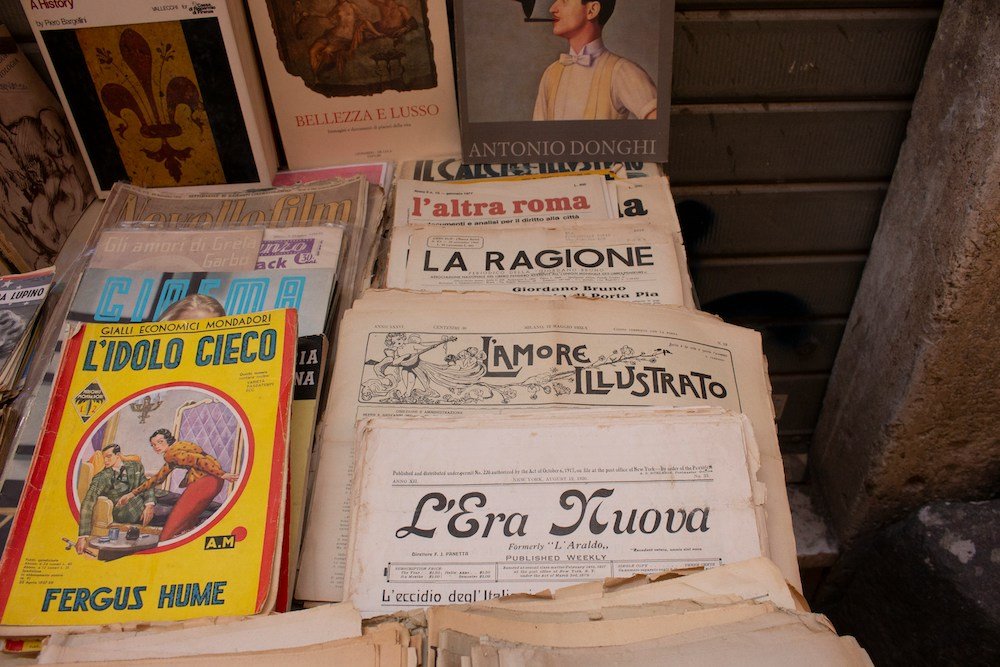
While English is widely spoken in tourist areas, learning basic Italian phrases can enhance your travel experience in Sardinia and facilitate meaningful interactions with locals.
Here’s why it’s beneficial:
- Cultural Connection: Speaking a few words of Italian shows respect for the local culture and demonstrates your willingness to engage with the community.
- Navigating Everyday Situations: Knowing essential phrases for greetings, directions, and ordering food can help you navigate everyday situations with ease and confidence.
- Building Rapport: Locals appreciate efforts to communicate in their native language, which can lead to more authentic and rewarding travel experiences.
Tips for Overcoming Language Barriers and Communicating Effectively
Navigating language barriers can be challenging, but with some strategies, you can communicate effectively and bridge cultural divides:
- Use Simple Language: Speak slowly and clearly, using simple vocabulary and gestures to convey your message.
- Learn Key Phrases: Master basic phrases for greetings, asking for directions, ordering food, and expressing gratitude.
- Be Patient and Flexible: Approach communication with patience and understanding, and be open to non-verbal cues and creative solutions to convey your needs.
- Utilize Translation Tools: Make use of translation apps, phrasebooks, and language guides to assist with communication, especially in complex or unfamiliar situations.
- Seek Assistance: Don’t hesitate to ask for help or clarification if you’re unsure about something. Locals are often happy to assist and appreciate your efforts to communicate respectfully.
Resources for Learning Italian Phrases and Language Basics
Prepare for your trip to Sardinia by familiarizing yourself with Italian language basics using these resources:
- Language Apps: Download language learning apps such as Duolingo, Babbel, or Rosetta Stone, which offer interactive lessons and practice exercises for beginners.
- Phrasebooks: Invest in a pocket-sized Italian phrasebook or travel guide with essential phrases and vocabulary tailored to travelers’ needs.
- Online Courses: Enroll in online language courses or tutorials that provide structured lessons and pronunciation practice at your own pace.
- Language Exchange Programs: Join language exchange groups or conversation clubs to practice speaking Italian with native speakers and fellow language learners.
- Local Classes: Consider taking Italian language classes or workshops in your community or online to develop your language skills and cultural understanding.
9. Currency and Payment Methods

Sardinia, like the rest of Italy, uses the Euro (EUR) as its official currency.
Here’s what you need to know about using the Euro in Sardinia:
- Currency Symbol: The Euro is denoted by the symbol “€” and is subdivided into 100 cents.
- Banknotes and Coins: Euro banknotes come in denominations of €5, €10, €20, €50, €100, €200, and €500, while coins are available in denominations of 1, 2, 5, 10, 20, and 50 cents, as well as €1 and €2.
Tips for Accessing Money and Using Payment Methods
To manage your finances and transactions effectively in Sardinia, consider the following tips:
- ATMs: ATMs are widely available in cities, towns, and tourist areas throughout Sardinia, allowing you to withdraw cash using your debit or credit card. Check with your bank regarding international transaction fees and notify them of your travel plans to avoid any issues.
- Credit Cards: Major credit cards such as Visa, Mastercard, and American Express are widely accepted in hotels, restaurants, shops, and attractions in Sardinia. However, it’s always a good idea to carry some cash for smaller purchases and transactions, especially in remote areas or local establishments.
- Currency Exchange: Exchange currency at banks, exchange offices, or ATMs for the best exchange rates. Avoid currency exchange services at airports or tourist hotspots, as they often charge higher fees and offer less favorable rates.
- Traveler’s Checks: While traveler’s checks are becoming less common, they can still be exchanged at banks or currency exchange offices in Sardinia. However, they may not be accepted everywhere, so it’s advisable to carry alternative forms of payment as well.
Information on Tipping Customs and Practices
Tipping customs in Sardinia are similar to those in other parts of Italy:
- Restaurants and Cafés: Tipping is not obligatory in Italy, as a service charge (servizio) is often included in the bill, especially in tourist areas. If service is exceptional, you may choose to leave a small tip (around 5-10% of the total bill) as a gesture of appreciation.
- Hotels: While tipping is not expected, you may choose to leave a small tip for hotel staff, such as housekeepers and porters, if you receive exceptional service.
- Taxis: Tipping is not mandatory, but rounding up the fare or leaving a small tip is appreciated for good service.
10. Safety and Health Considerations

Sardinia is generally a safe destination for travelers, but it’s always wise to take precautions to ensure a smooth and enjoyable trip:
- Stay Alert: Remain vigilant, especially in crowded tourist areas, and keep an eye on your belongings to prevent theft or pickpocketing.
- Travel Insurance: Purchase travel insurance before your trip to Sardinia to cover unexpected emergencies, medical expenses, and trip cancellations.
- Emergency Numbers: Familiarize yourself with emergency numbers such as 112 (general emergency), 113 (police), and 118 (medical emergencies) for quick assistance in case of emergencies.
- Weather Awareness: Be aware of weather conditions, especially during the summer months when temperatures can soar. Stay hydrated, seek shade, and apply sunscreen to prevent heat-related illnesses.
- Road Safety: If driving in Sardinia, adhere to traffic laws, wear seat belts, and exercise caution on winding roads and narrow streets, particularly in rural areas.
Health Considerations and Recommended Vaccinations
Before traveling to Sardinia, consider the following health considerations and vaccinations:
- Routine Vaccinations: Ensure that your routine vaccinations, including measles-mumps-rubella (MMR), diphtheria-tetanus-pertussis, varicella (chickenpox), and influenza, are up to date.
- Hepatitis A and Typhoid: Consider vaccinations for hepatitis A and typhoid, especially if you plan to explore rural areas or consume food and water from local sources.
- Tick-borne Diseases: In rural areas, particularly during the warmer months, take precautions against tick bites to prevent tick-borne diseases such as Lyme disease and tick-borne encephalitis.
- Food and Water Safety: Drink bottled or boiled water, and exercise caution when consuming raw or undercooked foods to prevent foodborne illnesses.
Emergency Contact Information and Healthcare Facilities
In case of medical emergencies or urgent assistance, here are important contact numbers and information about healthcare facilities in Sardinia:
- Emergency Numbers:
- General Emergency: 112
- Police: 113
- Medical Emergencies: 118
- Healthcare Facilities:
- Hospitals: Sardinia has several hospitals and medical centers across the island, including public hospitals and private clinics, offering emergency medical care and specialized treatments.
- Pharmacies: Look for “Farmacia” signs for pharmacies, which provide over-the-counter medications, prescription drugs, and basic medical supplies. Pharmacists can also offer advice and assistance for minor ailments.
11. Local Customs and Etiquette

Sardinia’s rich cultural heritage is reflected in its customs and social etiquette, which play an important role in daily life and interactions.
Understanding and respecting local customs can enhance your experience and foster positive connections with the people of Sardinia.
Tips for Respecting Local Traditions and Cultural Norms
Here are some tips to help you navigate Sardinian customs and social etiquette with respect and sensitivity:
- Respect for Elders: Show deference to older individuals by greeting them first and using formal titles such as “signore” (Mr.) and “signora” (Mrs.).
- Dress Modestly: When visiting churches, religious sites, or rural areas, dress modestly and avoid wearing revealing clothing out of respect for local customs and religious sensitivities.
- Mealtime Etiquette: During meals, wait for the host to initiate dining and refrain from starting until everyone is served. It’s customary to finish all the food on your plate as a sign of appreciation.
- Greetings: Greet people with a handshake and maintain eye contact while conversing. Use formal titles such as “buongiorno” (good morning) or “buonasera” (good evening) when addressing strangers or acquaintances.
- Gift Giving: When invited to someone’s home, consider bringing a small gift such as flowers, wine, or pastries as a token of appreciation. Avoid giving gifts in even numbers, as they are associated with funerals.
- Respect for Property: Treat public spaces, landmarks, and private property with respect. Avoid littering, vandalism, or disruptive behavior that may offend locals or damage the environment.
Understanding Gestures and Non-Verbal Communication Cues
Non-verbal communication plays a significant role in Sardinian culture and can convey subtle messages and emotions. Here are some common gestures and non-verbal cues to be aware of:
- Hand Gestures: Italians are expressive communicators and often use hand gestures to emphasize points or convey emotions. Gestures such as the “okay” sign (thumb and forefinger forming a circle) may be interpreted differently and are best avoided.
- Personal Space: Sardinians value personal space and may stand closer during conversations than individuals from other cultures. Respect boundaries and be mindful of personal space when interacting with locals.
- Eye Contact: Maintain eye contact during conversations as a sign of attentiveness and respect. Avoid prolonged staring, which may be perceived as intrusive or confrontational.
12. Transportation within Sardinia
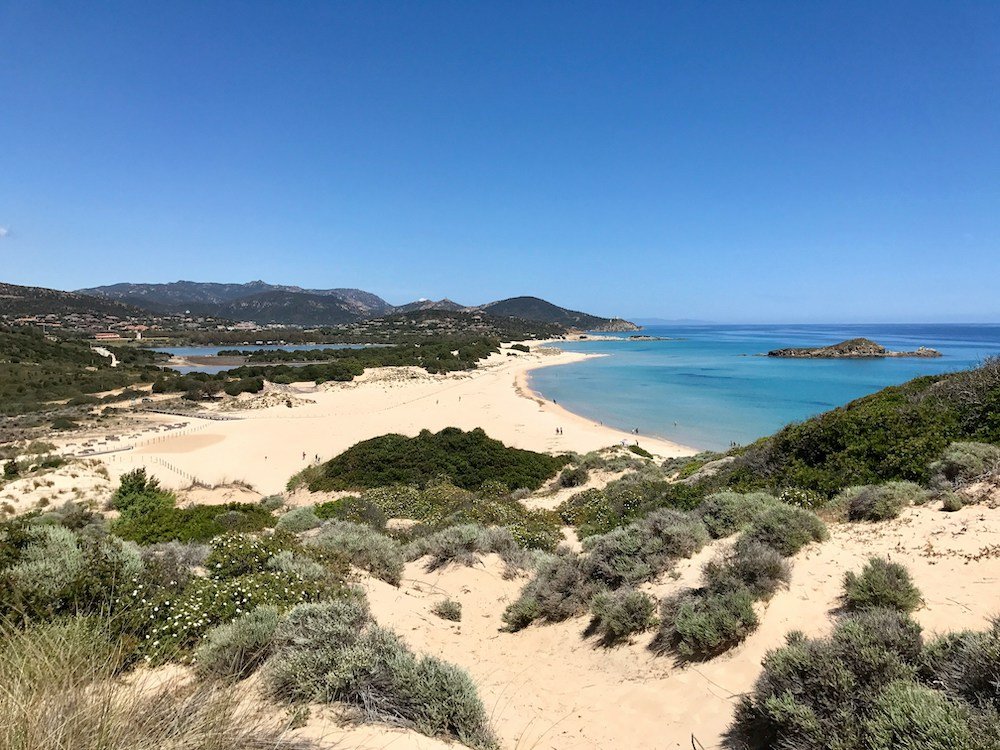
Sardinia offers various transportation options to explore its diverse landscapes, charming towns, and picturesque coastlines:
- Car Rental: Renting a car provides flexibility and convenience, allowing you to explore Sardinia at your own pace and access remote destinations not easily reached by public transportation.
- Public Transportation: Sardinia’s public transportation network includes buses, trains, and ferries, providing affordable and efficient options for traveling between cities, towns, and coastal regions.
- Taxis and Ridesharing: Taxis are available in urban areas and tourist hotspots, offering convenient door-to-door service. Ridesharing apps may also be available in some cities for on-demand transportation.
Recommendations for Renting Cars or Using Public Transportation
Consider the following factors when deciding between renting a car or using public transportation in Sardinia:
- Car Rental: Renting a car is ideal for travelers seeking independence and flexibility. It allows you to explore remote areas, scenic routes, and hidden gems off the beaten path. However, consider factors such as driving experience, rental costs, fuel expenses, and parking availability.
- Public Transportation: Public transportation in Sardinia is a cost-effective option for traveling between major cities and tourist destinations. Buses and trains connect urban centers and coastal towns, offering regular service and affordable fares. Additionally, ferries provide convenient transportation between Sardinia and neighboring islands.
Tips for Navigating Sardinia’s Roads and Transportation Networks
Navigating Sardinia’s roads and transportation networks requires some preparation and awareness:
- Driving Regulations: Familiarize yourself with Italian driving regulations, including speed limits, road signs, and traffic rules. Drive defensively and exercise caution on winding coastal roads and narrow mountain passes.
- Parking: In urban areas and tourist sites, parking may be limited and subject to fees or time restrictions. Look for designated parking areas or garages, and adhere to parking regulations to avoid fines or towing.
- Public Transportation Schedules: Check bus and train schedules in advance, especially for routes with limited service or seasonal variations. Arrive at bus stops and train stations early to ensure timely departure.
- Navigational Tools: Use GPS navigation or mobile apps to navigate Sardinia’s roads and transportation routes. Offline maps can be helpful in areas with limited cellular coverage.
- Language Considerations: While many transportation signs and announcements are in Italian, basic English signage is common in tourist areas. Consider learning key transportation-related phrases and terms to facilitate communication with locals and transportation staff.
Conclusion
Before embarking on your journey to Sardinia, it’s essential to remember the following key points:
- Understand Sardinia’s geography, climate, and cultural nuances to enhance your travel experience.
- Plan transportation and accommodation in advance, considering your preferences and budget.
- Learn basic Italian phrases and customs to communicate effectively and respectfully with locals.
- Familiarize yourself with local currency, tipping customs, and safety precautions to ensure a smooth and enjoyable trip.
Sardinia beckons with its pristine beaches, rugged landscapes, and vibrant culture, offering travelers a tapestry of unforgettable experiences.
Embrace the island’s rich history, culinary delights, and natural wonders as you immerse yourself in its timeless allure.
From exploring ancient ruins and scenic coastlines to savoring authentic cuisine and forging connections with locals, Sardinia invites you to embark on a journey of discovery and wonder.
As you prepare to explore the enchanting island of Sardinia, approach your adventure with confidence and curiosity. Allow yourself to wander through ancient streets, bask in the warmth of Mediterranean sunsets, and savor the flavors of local delicacies.
Whether you’re seeking relaxation on sun-kissed beaches, adventure in rugged mountains, or immersion in vibrant cultural festivals, Sardinia welcomes you with open arms.
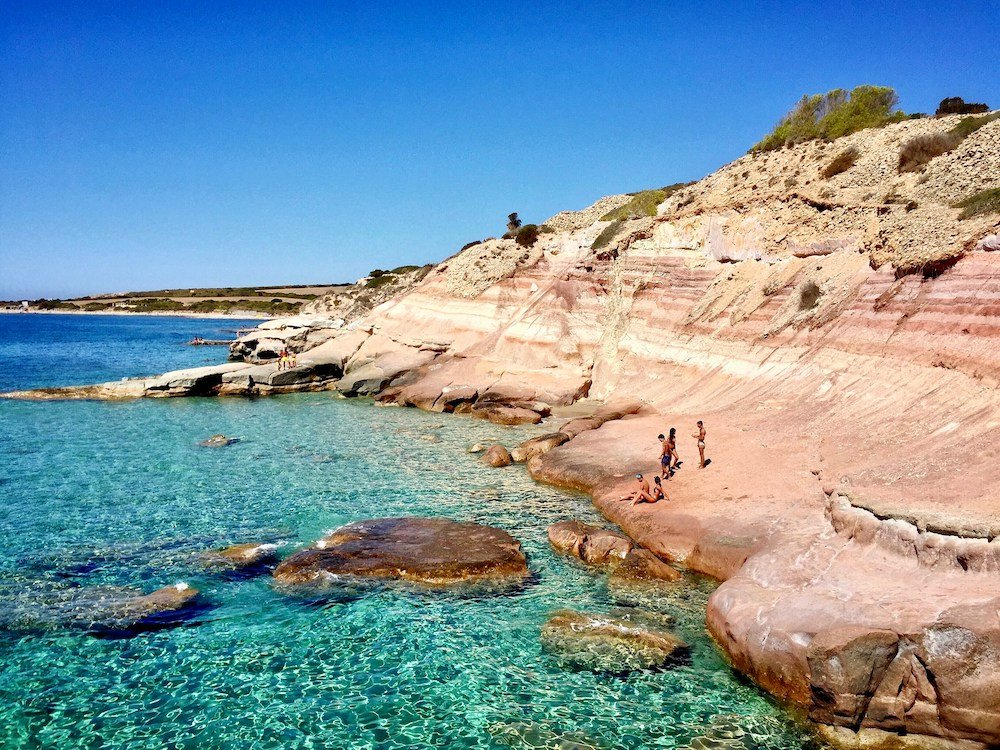
FAQ’s About the Island of Sardinia:
Is Sardinia Very Expensive?
Sardinia can be relatively expensive compared to other parts of Italy, particularly during the peak tourist season.
Costs for accommodations, dining, and activities may be higher, especially in popular tourist areas and luxury resorts.
However, budget-friendly options are available, especially if you plan your trip carefully, opt for accommodations outside major tourist hubs, and explore local eateries and markets.
What Is So Special About Sardinia?
Sardinia’s allure lies in its diverse landscapes, rich history, and vibrant culture.
From stunning beaches with crystal-clear waters to rugged mountains dotted with ancient ruins, Sardinia offers a wealth of natural beauty and outdoor adventures.
Its unique blend of Italian, Spanish, and Mediterranean influences is reflected in its cuisine, festivals, and traditions, making it a captivating destination for travelers seeking authenticity and exploration.
How Is Sardinia Different from the Rest of Italy?
Sardinia stands apart from mainland Italy in its distinct culture, language, and traditions.
With a history shaped by various civilizations, including the Nuragic, Phoenician, and Roman, Sardinia boasts archaeological sites, prehistoric settlements, and unique architectural styles.
The island’s language, Sardinian, and its cultural practices add to its uniqueness, offering visitors a glimpse into a world that is both ancient and modern.
Do They Speak English in Sardinia?
While English is spoken to some extent in tourist areas and by younger generations, especially in larger cities and coastal resorts, proficiency levels may vary.
In rural areas and among older residents, knowledge of English may be limited.
Learning basic Italian phrases can be helpful for communication, and locals often appreciate efforts to speak their language.
Is Sardinia Tourist-Friendly?
Yes, Sardinia is generally considered tourist-friendly, offering a wide range of accommodations, dining options, and attractions to suit various tastes and preferences.
The island’s hospitality industry caters to travelers from around the world, providing amenities and services to ensure a comfortable and enjoyable stay.
However, like any destination, it’s essential to respect local customs, traditions, and regulations while exploring Sardinia.
What Is the Best Time to Visit Sardinia?
The best time to visit Sardinia depends on your preferences and interests.
The summer months, from June to August, are ideal for sunbathing, swimming, and water sports along the island’s stunning beaches. Spring (April to May) and autumn (September to October) offer pleasant weather for outdoor activities, cultural festivals, and sightseeing, with fewer crowds and milder temperatures.
Winter (November to March) can be quieter, with opportunities for hiking, exploring historical sites, and enjoying local cuisine.
How Many Days in Sardinia Is Enough?
The ideal duration for a trip to Sardinia depends on your itinerary and interests.
While it’s possible to explore some of the island’s highlights in a week, spending 10 days to two weeks allows for a more leisurely exploration of its diverse landscapes, cultural attractions, and hidden gems.
Whether you’re seeking relaxation on the beach, adventure in the mountains, or immersion in local culture, Sardinia offers something for every traveler.
Should I Go to Sicily or Sardinia?
Both Sicily and Sardinia offer unique experiences and attractions, making it a matter of personal preference.
Sicily boasts ancient ruins, historic cities, and culinary delights influenced by Greek, Roman, and Arab civilizations.
Sardinia, on the other hand, entices with pristine beaches, rugged mountains, and traditional villages steeped in history and folklore.
Consider your interests, budget, and travel priorities when choosing between the two destinations.
Is It Better to Stay in North or South Sardinia?
The choice between staying in North or South Sardinia depends on your preferences and travel plans.
North Sardinia is known for its glamorous resorts, vibrant nightlife, and upscale amenities, making it popular among luxury travelers and beachgoers.
South Sardinia offers a more laid-back atmosphere, with secluded beaches, rugged landscapes, and authentic cultural experiences.
Consider your interests, budget, and desired activities when deciding where to base yourself in Sardinia.
